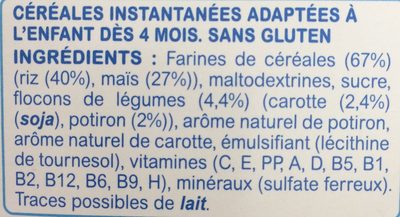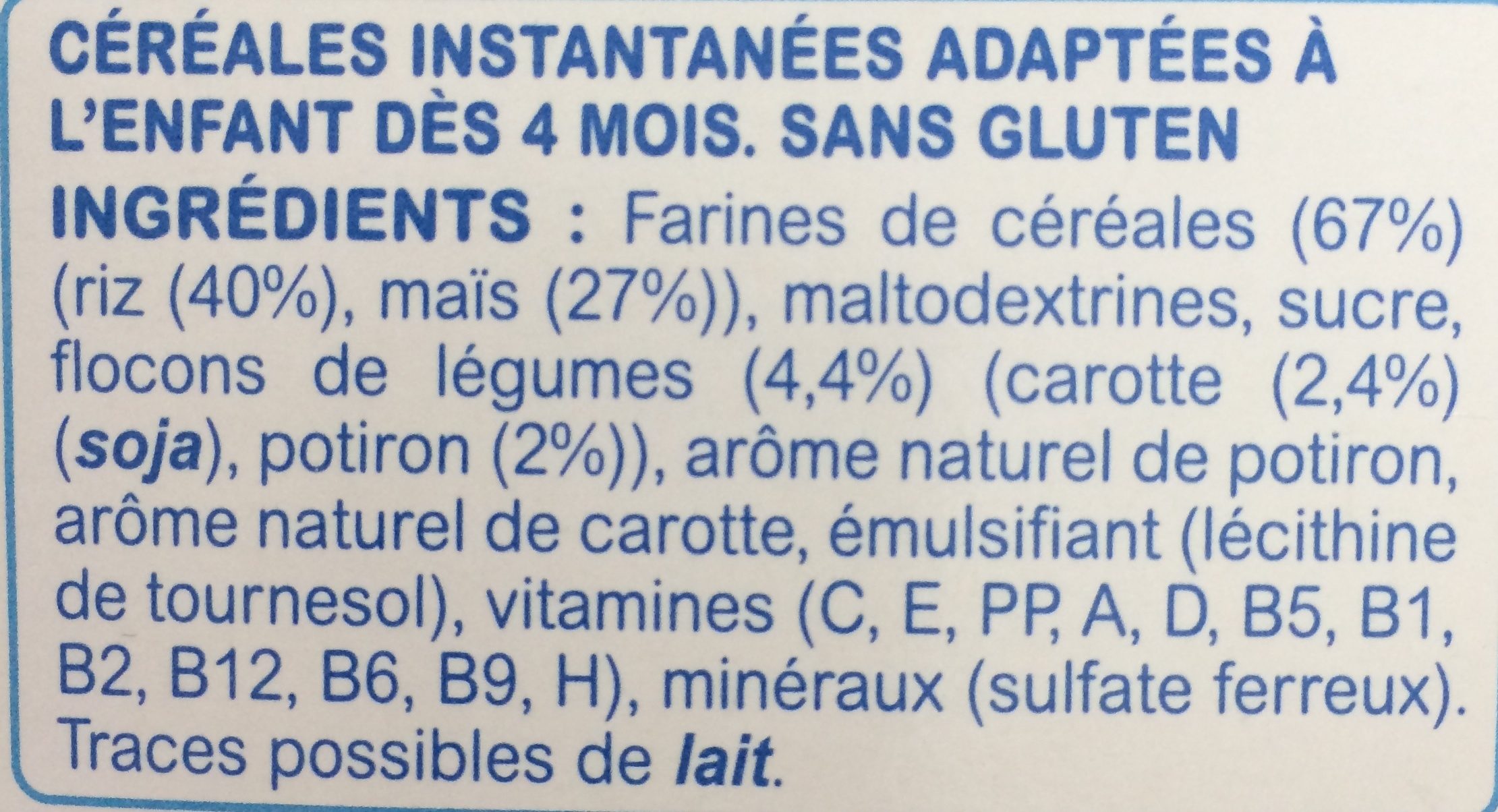Mes 1ères céréales du soir Riz Carottes Potiron - Milumel - 200 g
This product page is not complete. You can help to complete it by editing it and adding more data from the photos we have, or by taking more photos using the app for Android or iPhone/iPad. Thank you!
×
Barcode: 3288111092757 (EAN / EAN-13)
Quantity: 200 g
Brands: Milumel
Categories: Baby foods, From 4 months, Cereals for babies
Labels, certifications, awards: Low or no salt, No gluten, No added salt, No palm oil, fr:Produits retirés du marché lors du scandale Lactalis de décembre 2017
Countries where sold: France
Matching with your preferences
Environment
Packaging
Transportation
Report a problem
Data sources
Product added on by kiliweb
Last edit of product page on by packbot.
Product page also edited by beniben, manu1400, openfoodfacts-contributors.
If the data is incomplete or incorrect, you can complete or correct it by editing this page.






